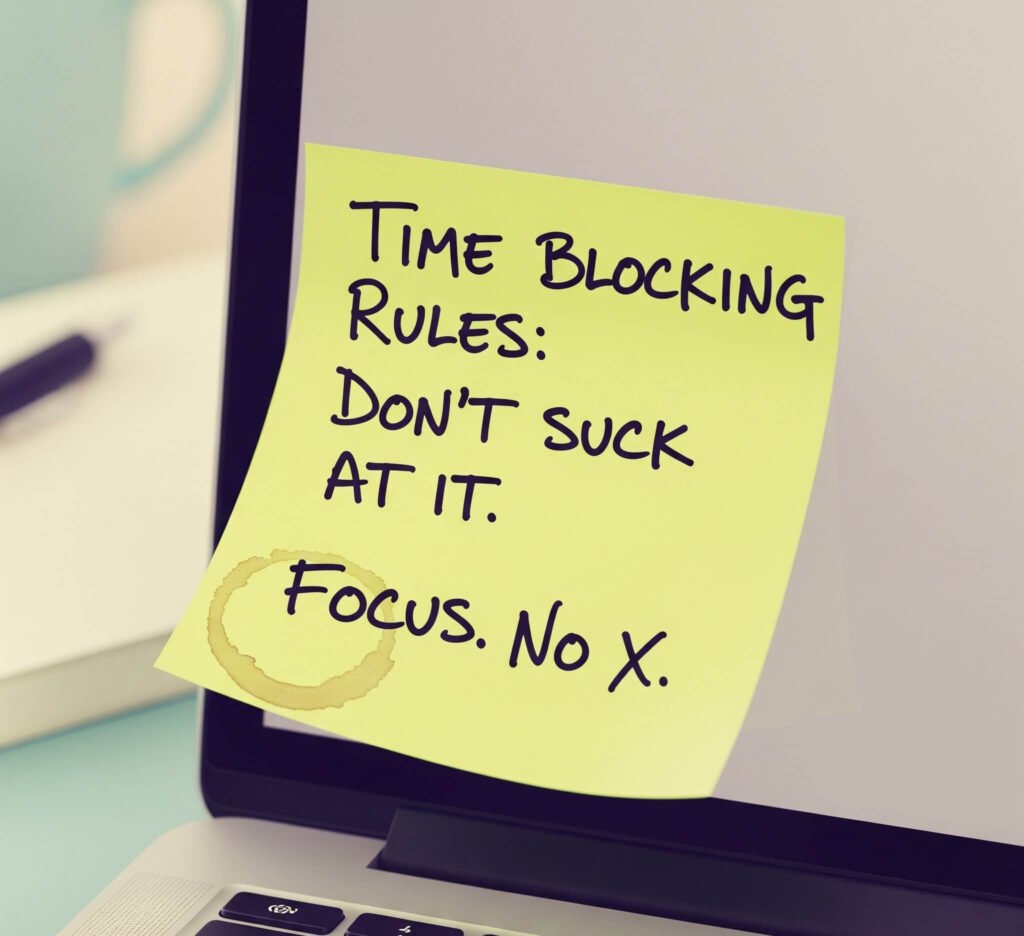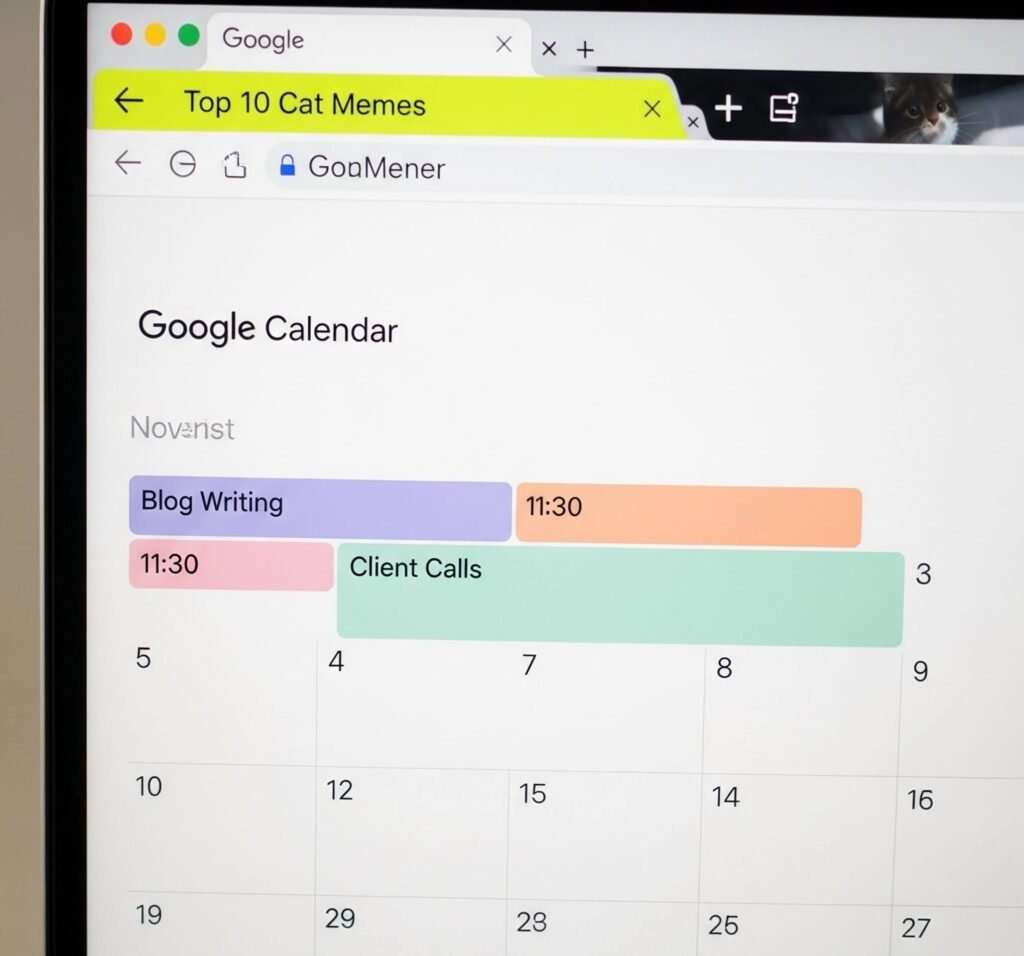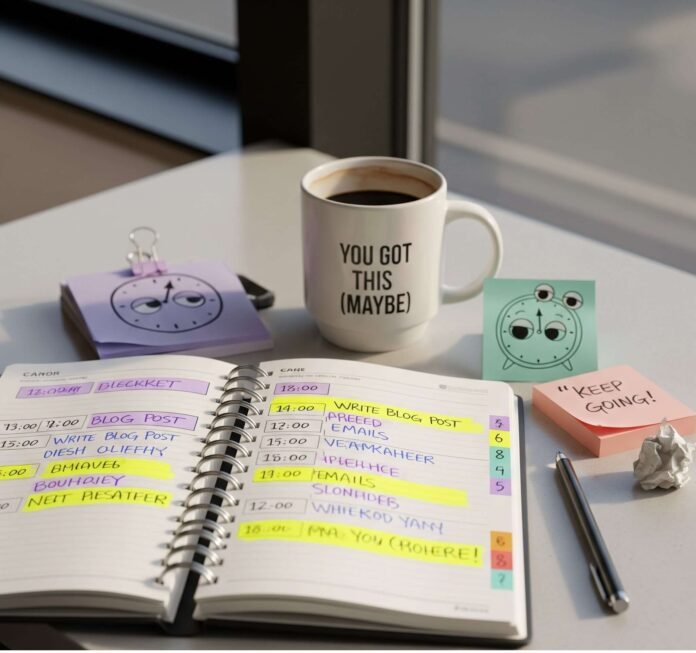My Messy Love Affair with the Time Blocking Method
Okay, so time blocking? It’s basically my lifeline right now, but let me be real: I’m a hot mess at it. Sitting here in a noisy Seattle coffee shop, with the smell of burnt espresso and the hum of some indie playlist, I’m staring at my planner, which looks like a toddler attacked it with highlighters. I started using the time blocking method last month because, frankly, my brain was a dumpster fire of distractions. Between doomscrolling X, binge-watching reality TV, and pretending to “multitask,” I was getting nothing done. Like, I’d start writing this blog post, then somehow end up researching the history of sourdough bread. True story.
Time blocking, for the uninitiated, is where you carve out specific chunks of your day for specific tasks. Sounds simple, right? Yeah, no. It’s like trying to herd cats while riding a unicycle. But when it works? It’s like finding an extra hour in the day. I’m gonna spill the tea on how I stumbled into this productivity hack, the embarrassing mistakes I made, and why I’m still kinda obsessed with it despite the chaos.

Why Time Blocking Method Felt Like a Revelation (and a Curse)
I first heard about time blocking from a post on X by some productivity guru (shoutout to Cal Newport’s blog for the deep dive on deep work—game-changer). I was skeptical. Like, who has time to plan their day in 30-minute chunks? But I was drowning in deadlines, and my inbox was a war zone. So, I gave it a shot. My first attempt? Disaster. I blocked off 8 AM to 9 AM for “creative writing,” but instead, I spent 45 minutes scrolling X for memes about procrastination. I’m not proud.
The revelation came when I realized time blocking isn’t about being perfect—it’s about giving your brain permission to focus on one thing. Like, when I block 2 PM to 3 PM for “emails,” I’m not allowed to touch my blog or check X. It’s like putting blinders on a horse. My coffee shop setup helps—there’s something about the clatter of dishes and the hiss of the espresso machine that forces me to zone in. But the curse? I overestimate how much I can do. I’ll block an hour for “research” and end up with 47 browser tabs open, including one about “best rainy day activities in Seattle.” Spoiler: I’m not even planning a trip.
My Top Time Blocking Method Tips (Learned the Hard Way)
Here’s what I’ve figured out about making the time blocking method work, mostly through trial and error (heavy on the error):
- Start small, like, stupid small. Don’t try to block your whole day. I started with just two hours—one for writing, one for emails. Baby steps, y’all.
- Use a physical planner. Digital apps are cool, but there’s something about scribbling “FOCUSED WORK” in neon pink that makes it real. My planner’s a mess, but it’s my mess.
- Leave buffer time. I forgot this and ended up crying in my car because I scheduled back-to-back blocks and had no time to pee. True story.
- Be flexible, but not too flexible. If I miss a block, I move it, but I don’t let myself skip it entirely. Otherwise, it’s a slippery slope back to X memes.

The Time Blocking Method vs. My Chaotic Brain
Here’s the thing: my brain hates structure, but it also craves it. I’m sitting here, surrounded by hipsters typing furiously on MacBooks, and I’m trying to stick to my 11 AM to 12 PM block for “blog writing.” But my phone’s buzzing, and I’m tempted to check if someone liked my X post about my cat’s existential crisis. The time blocking method is like a leash for my brain—it keeps me from wandering too far. But sometimes, I still slip.
Last week, I blocked 3 PM to 4 PM for “client calls,” but I got distracted by a barista dropping a tray of mugs. I spent 20 minutes helping clean up (because I’m a sucker for chaos) and missed my block. Did I recover? Kinda. I moved the call to 5 PM, but I felt like a failure. The beauty of time blocking, though, is that it’s forgiving if you let it be. You just pick up and try again. It’s not about perfection; it’s about progress.
How Time Blocking Method Changed My Work (and My Anxiety)
I won’t lie—time blocking hasn’t made me a productivity god. I still have days where I stare at my planner like it’s written in hieroglyphics. But it’s cut my anxiety in half. Knowing I have a chunk of time carved out for focused work makes me feel like I’m not just flailing through life. Plus, it’s helped me actually finish stuff. This blog post? It’s happening because I blocked 10 AM to 1 PM today, even if I spent 15 minutes ranting about sourdough earlier.
The biggest surprise? I’m less hard on myself. I used to beat myself up for not getting everything done. Now, I’m like, “Okay, I missed that block, but I’ve got another one at 4 PM.” It’s like giving myself permission to be human. Also, shoutout to Todoist’s blog for some killer tips on tweaking this method for scatterbrains like me.

Wrapping Up My Time Blocking Rant
So, yeah, the time blocking method is my current obsession, even if I’m still figuring it out. It’s like trying to tame a wild animal—messy, frustrating, but weirdly rewarding. I’m sitting here, sipping my overpriced latte, surrounded by the chaos of this coffee shop, and I’m actually kinda proud I got this blog post done (mostly). If you’re drowning in distractions like I was, give time blocking a shot. It’s not magic, but it’s the closest thing I’ve found to keeping my brain on a leash.



























